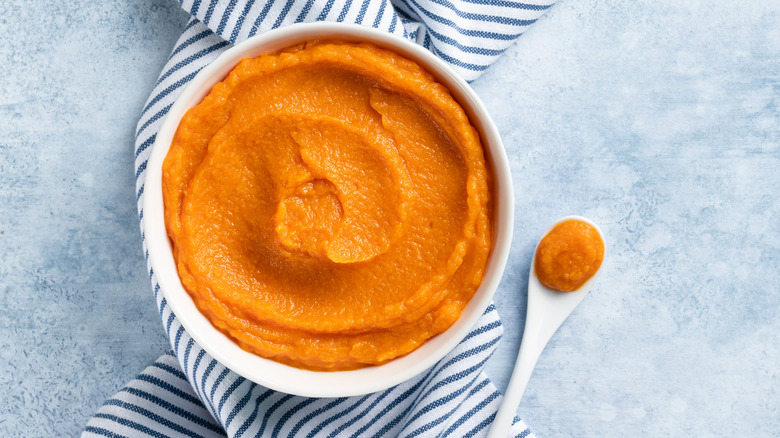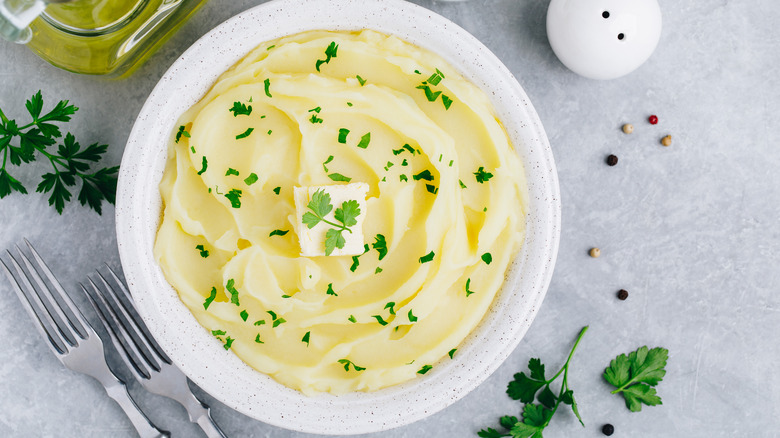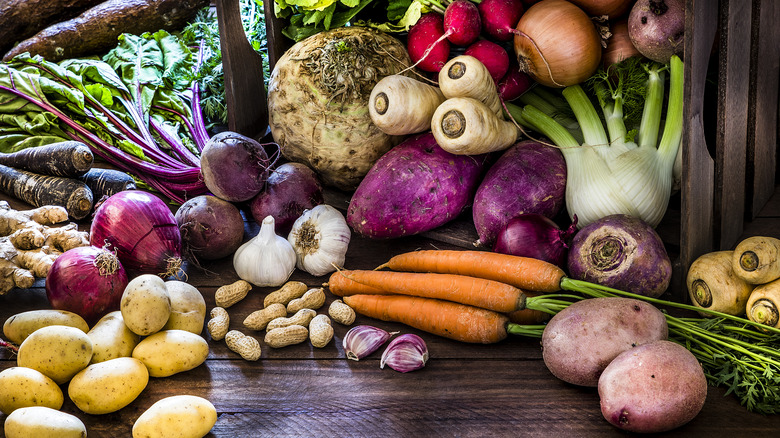The Key To Getting The Smoothest Root Vegetable Purée Possible
A proper vegetable purée can elevate any ordinary weeknight meal. When done well, a purée should be vibrant in appearance, with a texture and mouthfeel that's smooth and luscious. In French, the word derives from "purer," which means to purify or strain. From this definition, it's obvious why this cooking method requires a degree of technique and refinement to get right.
But your technical expenditure will be well worth the effort because there's more to purées than meets the eye. At a restaurant, a purée typically plays a supporting role to some flashy piece of protein, but if you make one at home, you can find a multitude of other uses for this silky blend of vegetables. A purée can serve as an alternative starch instead of pasta, rice, or French fries. But it can also be used to thicken soups, add creaminess to sandwiches, bind together burgers, add moisture to a dry meatloaf, and elevate a lifeless sauce.
To make a great purée, you must understand the makeup of your vegetable. Stringy vegetables, like asparagus and celery, require a different cooking method than peas or butternut squash. But when it comes to root vegetables, to get that smooth, silky texture, you need to cook them completely.
How to achieve a perfectly smooth root vegetable purée
The ideal root vegetable purée should be smooth and creamy, and absent of any graininess or off-putting lumps. The most important step to achieving this sublime texture is cooking your vegetables until they are soft and fork-tender. No toothsome potatoes or carrots with bite; everything should be cooked to the point where it can be easily mashed or blended. Otherwise, you'll never get that velvety finish. Boiling your root vegetables is one option, but you can also steam, microwave, or roast them, although the latter method might affect the final appearance of your purée. Whichever method you choose, just remember to cut your vegetables into small, equal pieces to ensure even cooking.
Another important step is to think about adding other ingredients, like fat, broth, or both to your blender of cooked vegetables. Butter, cream, and half-and-half are all excellent options and will help you get a purée that's luscious and rich. These dairy-forward ingredients also help round out the flavor. If you're looking for an alternative to all that dairy, you can go with olive oil, coconut oil, or a well-seasoned broth or stock.
Which root vegetables make the best purées?
Root vegetables are among the easiest categories of ingredients to purée. They take well to fats and are creamy when cooked. Plus, they don't have any pesky seeds or slippery skins that are tough to peel. Another advantage is that they're naturally high in starch, which makes them inherently creamy, but they can also become gummy if over-blended in your food processor. For ingredients like white potatoes, avoid the blender and try mashing them by hand.
So which varieties of root vegetables should you use for your next purée? Well, you have many options. Parsnips and carrots are abundant during the fall and winter months and have a faint peppery note and subtle sweetness that pairs well with proteins. Beets also make for interesting purées (and not just for babies). With their dramatic shade of magenta, a pillow of fluffy beet purée can be an eye-catching addition to your main course. Turnips and celery root are less commonly used but make for an alluring and dynamic side dish. Just remember to cook them until tender to achieve that perfectly smooth texture.


